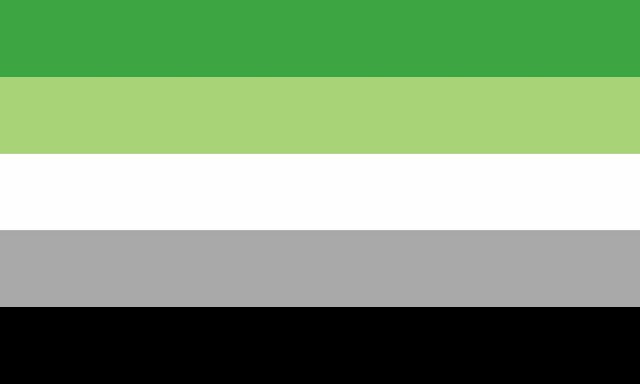The Meaning Behind Each Pride Flag
June 14, 2021
The month of Pride is upon us and already you’ve probably seen the beautiful flag colors popping up across towns and on social media. However, if you’re a new ally or a new member of the LGBTQ+ community many of these flags can be confusing. There are a lot of them after all, and each one of them has its own unique meaning. Worry not, for in this listicle we’ll cover each pride flag and the community they represent.
- The Pride Flag
The rainbow pride flag is symbolic of the LGBTQ+ community as a whole and stemmed from an earlier version of the flag, created by Gilbert Baker, who chose a rainbow for the flag to represent hope and positivity.
- Lesbian Pride Flag
The original flag for this community was created by Natalie McCray in 2010 and included a kiss mark on the top left corner. However, after facing allegations of transphobia, biphobia and racism in 2018, the community redid the flag. The dark orange represents gender nonconformity; the middle shade of orange represents independence; the light shade of orange represents community; the white is for unique relationships to womanhood; the light pink is for serenity and peace, the middle pink is for love and sex and the dark pink is for femininity.
- Bisexual Pride Flag
Bisexuality can be described as an attraction to more than one gender, often men and women. Micheal Page created the Bisexual Pride Flag in 1998 to increase the visibility of the bisexual community. The pink represents same-sex attraction, the purple attraction to both sexes and the blue attraction to the opposite sex.
- Pansexual Pride Flag
The creator of the pansexual flag isn’t known, but this flag gained traction in 2010 and is representative of people attracted to all genders and sexualities. The pink represents people who identify as female, the yellow as nonbinary attraction and the blue as people who identify as male.
- Transgender Pride Flag
This flag was designed in 1999 by Monica Helms, a transgender activist, author and veteran. Helms designed this flag so that no matter how it was displayed it would always be correct. The pink represents girls, the blue represents boys and the white represents those who are gender neutral or transitioning.
- Philadelphia’s People of Color Inclusive Flag
In 2017 the city of Philadelphia added black and brown to the traditional pride flag to symbolize and bring awareness to LGBTQ+ people of color. The flag had been created in response to racial discrimination in the city’s gay bars and was donned by Lena Waithe in the 2018 Met Gala.
- Queer People of Color Flag
During the height of the Black Lives Matter movement, this flag gained traction within the LGBTQ+ community and became symbolic for LGBTQ+ allies of the BLM movement.
- Asexual Pride Flag[1]
The asexual spectrum consists of people who feel sexual attraction less than average, varying from none at all, to infrequently, to only after they’ve formed a strong connection with another person. This flag was created in 2010 to bring awareness to the asexual community.
The black represents the entire asexual spectrum, the gray represents gray asexuality and demisexuals (people who only feel sexual attraction when they have a strong emotional connection with another person), white represents sexuality and the purple represents community.
- Aromantic Pride Flag[2]
The aromantic spectrum consists of people who feel no romantic attraction to others or romantic attraction only after they’ve formed a strong emotional connection with another person. The dark green represents aromanticism, the light green represents the aromantic spectrum; white is for platonic and aesthetic attractions, and gray and black represent sexuality.
- Genderqueer Pride Flag
Genderqueer is a term for people who don’t conform to or act as the gender they were assigned to at birth. The genderqueer flag was made in 2011 by writer and musician Marilyn Roxie. The lavender represents androgyny, the white is for agender identities and the green is for non-binary identities.
- Non-binary Pride Flag
Non-binary is somewhat of an umbrella term and depending on who you ask it can mean many different things. At its core the definition of non-binary means not adhearing to the traditional male-female binary or identifying outside of it.
The flag was created in 2014 for people who didn’t feel that they fell under the genderqueer flag. The yellow represents genders outside the gender binary, the white is for people who identify with different genders, the purple is for people that identify as both male and female and the black is for people who identify as agender.
- Agender Pride Flag
The Agender pride flag was created in 2014 by Salem X and represents people who don’t identify with or connect to any gender. The black and white represent the absence of gender. The gray is for semi-genderlessness and the green is for non-binary genders.
- Genderfluid Pride Flag
People who identify as genderfluid shift between genders, be it male, female or non-binary. This flag was created in 2012 by JJ Poole to create a flag that was less broad than the genderqueer flag. The pink represents femininity, the white is for all genders, the purple is for both masculinity and femininity, the black is for a lack of gender and the blue is for masculinity.
- Intersex Pride Flag
Intersex is an umbrella term for people whose bodies do not conform to the male-female binary. This can be having both sets of genitals, a varying combination of chromosomes, or different sets of internal reproductive organs.
The intersex flag was created by Australia’s co-executive director of Intersex Human Rights Morgan Carpenter in 2013 to create an image intersex people could identify with and join under without depending on stereotypes. The gold represents the reclaimed slur “hermaphrodite” and the purple circle in the middle represents being whole and complete, as well as symbolizing the right for intersex people to make their own decisions about their bodies and genders.
- Polysexual Pride Flag
The polysexual flag was created in 2012 and lies between both the bisexual and pansexual flags, in being that people who identify as polysexual are attracted to more than two genders but not necessarily all. The pink represents attraction to women, the green is for attraction to non-binary genders and the blue represents attraction to men.
- Polyamourous Pride Flag
Not to be confused with the polysexual pride flag, the polyamourous pride flag is representative of people in open relationships or in relationships involving more than two people. The original flag was made in 1995 by Jim Evans, who used blue to represent honesty and openness in the relationship, red for love and sexuality, and black for people who had to hide their relationships.
Evans’ flag also featured a golden pi symbol on the front, the symbol for infinity or infinite partners. Over the years, however, the flag has changed to be both easier on the eyes and less stigmatizing by desaturating the colors and changing the pi symbol to a golden heart with an infinity symbol across it.
- Straight Ally Pride Flag
The straight ally flag is exactly what it sounds like, for people who don’t identify as LGBTQ+ but support the community. The black and white in the background represents the allies, while the rainbow in front represents the LGBTQ+ community.
While this is far from all the flags you’re likely to see at Pride this year, as more subsections of the community blossom and grow each year, these are the ones that have gained the most traction within recent history and should be the easiest to identify. If there’s ever a flag you don’t recognize this year, don’t be afraid to ask. You’re likely to learn so much more about the community and how to support it!





